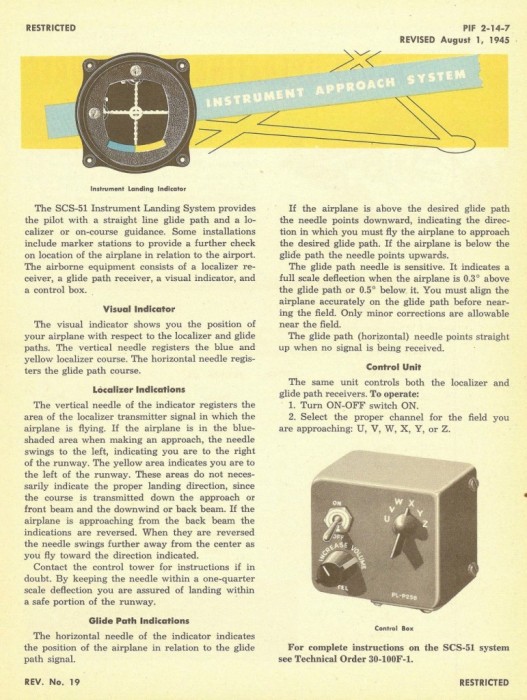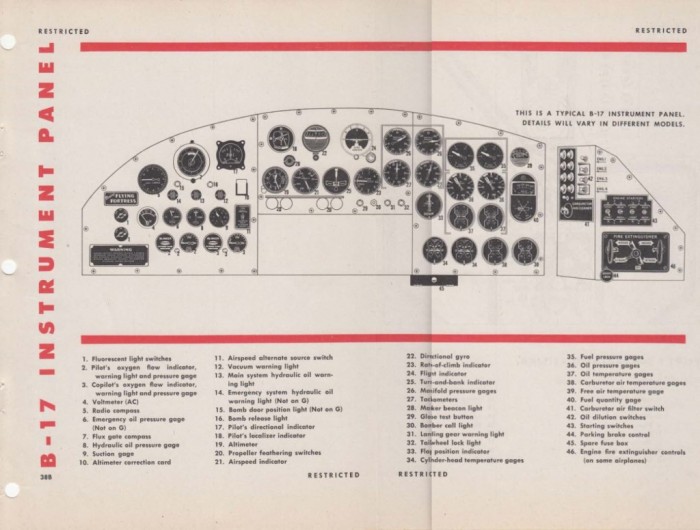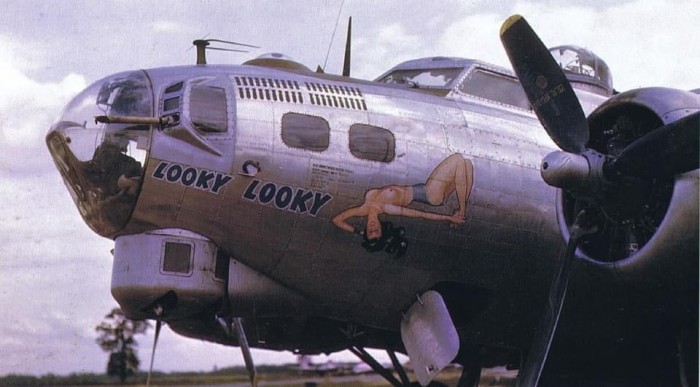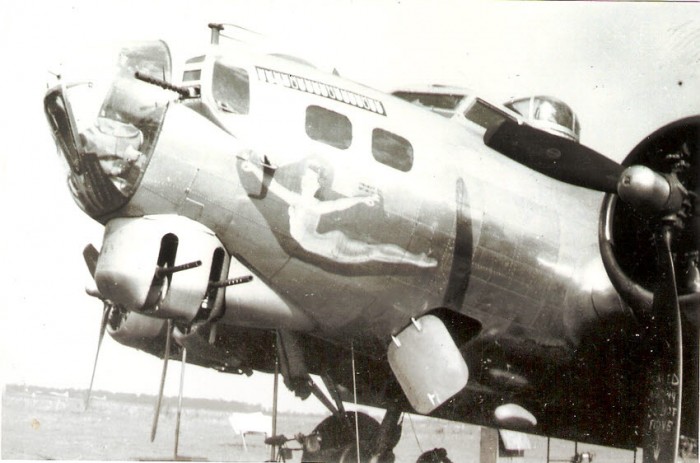The RC-103 instrument approach equipment along with marker beacons and glideslope receivers were in use late in WWII. It can be seen in the B-17 photos showing the antennas for localizer and glideslope on top of the nose. It can also be seen on the instrument panels and is referenced in the Pilots Information file.
Attachment:
 pif 8-45wix.jpg [ 255.69 KiB | Viewed 3290 times ]
pif 8-45wix.jpg [ 255.69 KiB | Viewed 3290 times ]
Number 18
Attachment:
 b-17 panel wix.jpg [ 154.86 KiB | Viewed 3290 times ]
b-17 panel wix.jpg [ 154.86 KiB | Viewed 3290 times ]
The antenna for localizer and glideslope in front of the astrodome
Attachment:
 17d8wdvgbtt61.jpg [ 71.18 KiB | Viewed 3290 times ]
17d8wdvgbtt61.jpg [ 71.18 KiB | Viewed 3290 times ]
Attachment:
 b-17G rc-103 ant.jpg [ 85.88 KiB | Viewed 3290 times ]
b-17G rc-103 ant.jpg [ 85.88 KiB | Viewed 3290 times ]
Incidentally the frequencies used for the ILS, and even marker beacons in WWII, are the same frequencies used today. The present ILS system hasn't really changed that much since WWII.
_________________
To donate to the PV-2D project via PayPal click here
http://www.twinbeech.com/84062restoration.htmWe brought her from:

to this in 3 months:

Help us get her all the way back

All donations are tax deductible as the Stockton Field Aviation Museum is a 501c3 nonprofit organization. Tell a friend as the Harpoon needs all the help she can get.
Thank you!
Taigh Ramey
Vintage Aircraft, Stockton, California
http://www.twinbeech.com'KEEP ‘EM FLYING…FOR HISTORY!'




